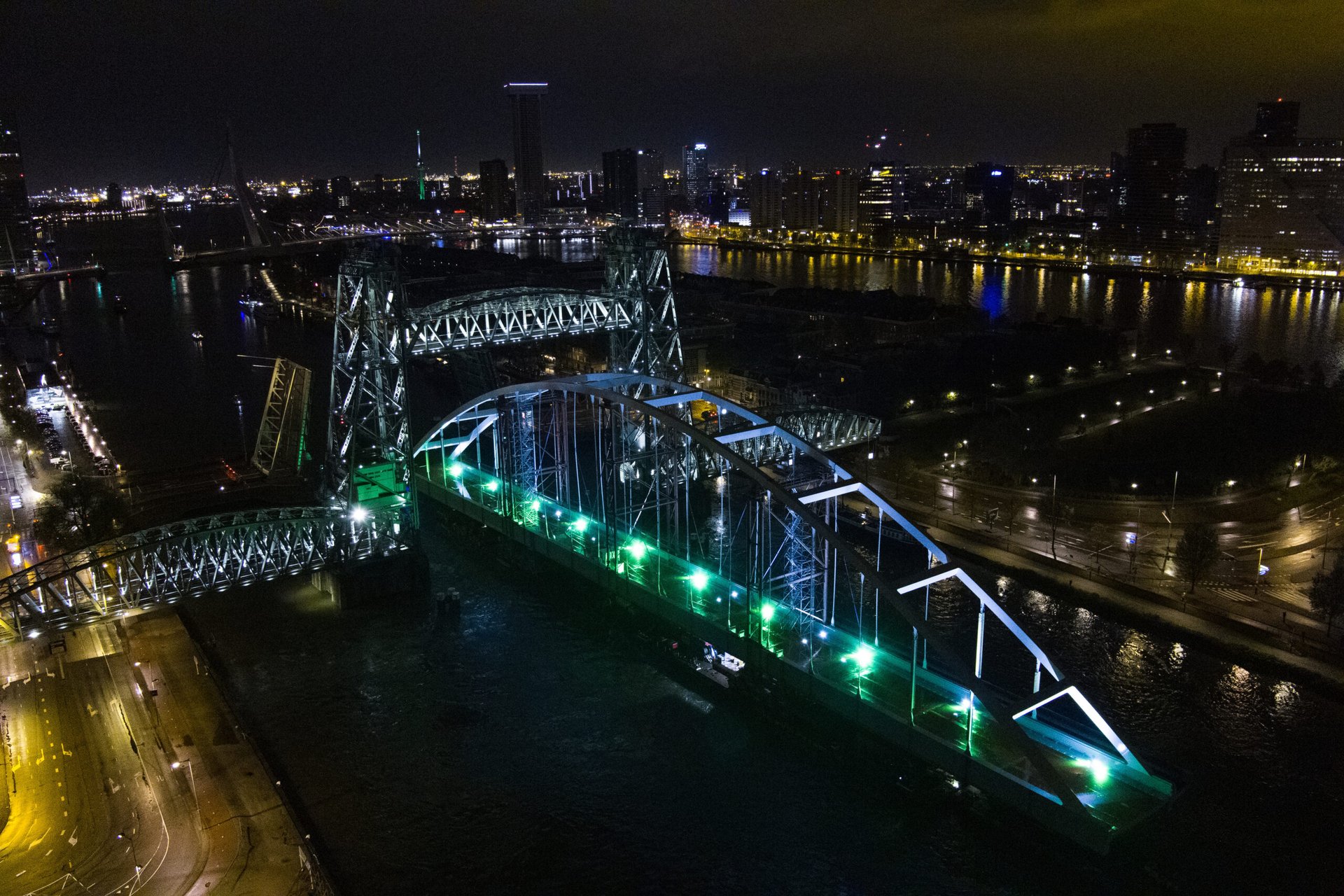
Transport Suurhoffbrug
On behalf of Rijkswaterstaat, we produced a livestream of the unique transport of a 200-meter long arch bridge from Rotterdam to the Maasvlakte. We captured this complex logistical operation on land, sea, and in the air.
Introduction
At the start of 2021, we were approached by communications agency Tappan to brainstorm a livestream for Rijkswaterstaat. Later that year, a rather unique water transport was planned, involving a fully constructed bridge being moved through Rotterdam. It was quite a complex task with bridges along the route, everything had to fit just right. Were we interested in taking a look? Absolutely, we were.
And so it happened that our technical producer, Floris, found himself in early March standing 40 meters high between the arches of a bridge, pondering how to produce a livestream of a transport over 40 kilometers of water.
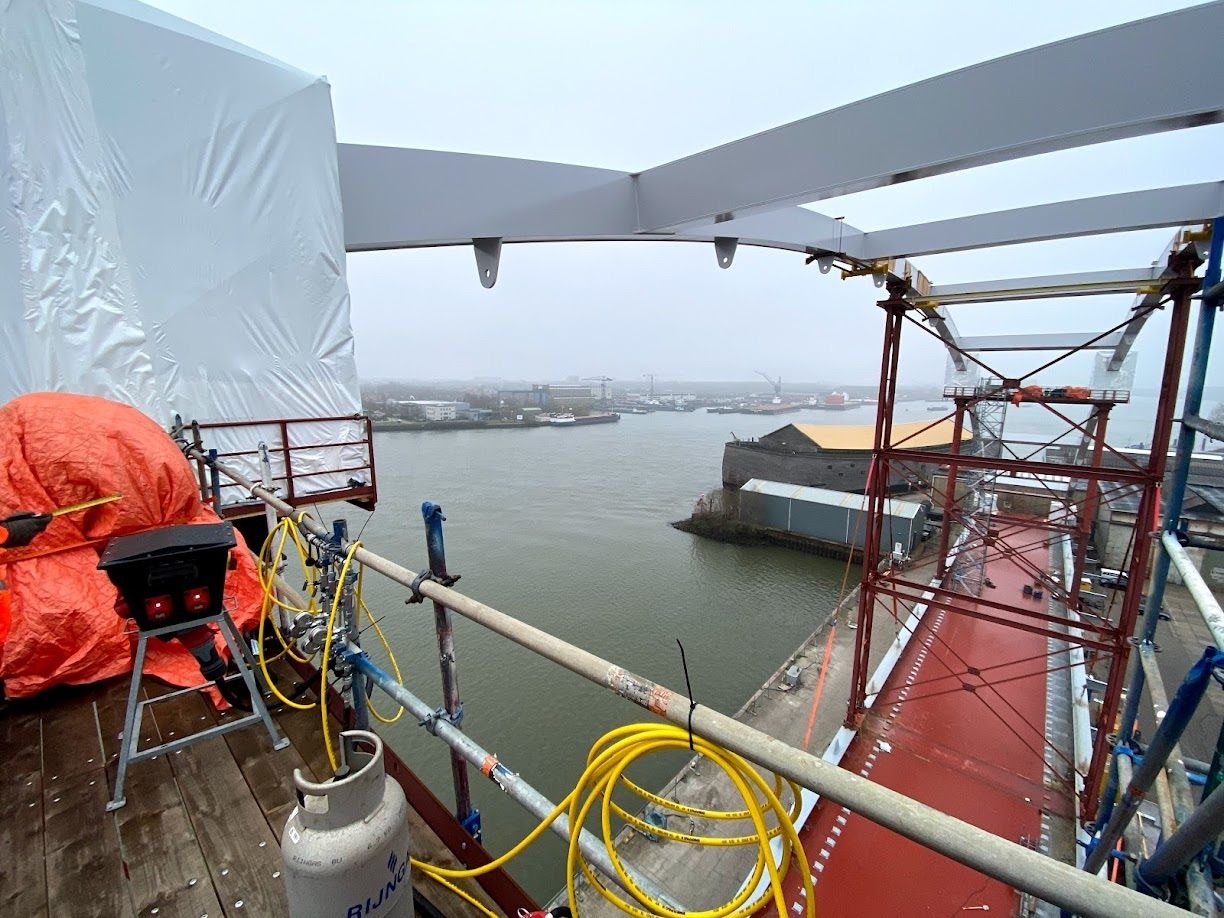
The project was dubbed the transport of the temporary Suurhoff Bridge. But why a temporary Suurhoff Bridge? And why transport it through Rotterdam?
The existing Suurhoff Bridge is a crucial link between the Maasvlakte and the rest of the Port of Rotterdam. Due to the bridge's significant economic importance, it couldn't be taken out of service for maintenance. Therefore, a temporary Suurhoff Bridge was to be built and installed, allowing the existing bridge to undergo major maintenance. Sounds complicated? It underscores the bridge's importance, as the Maasvlakte is too vital an economic engine for our country's import and export to halt traffic for long.
A consortium of Dura Vermeer, Besix, Hollandia, and Mobilis was engaged for the bridge's construction, and for efficiency and speed, the project was executed on Hollandia's site along the Nieuwe Maas, a few kilometers east of the Van Brienenoord Bridge. Rijkswaterstaat managed all this without Stream My Event's help. For a new arch bridge, you are better off contacting one of the aforementioned parties.
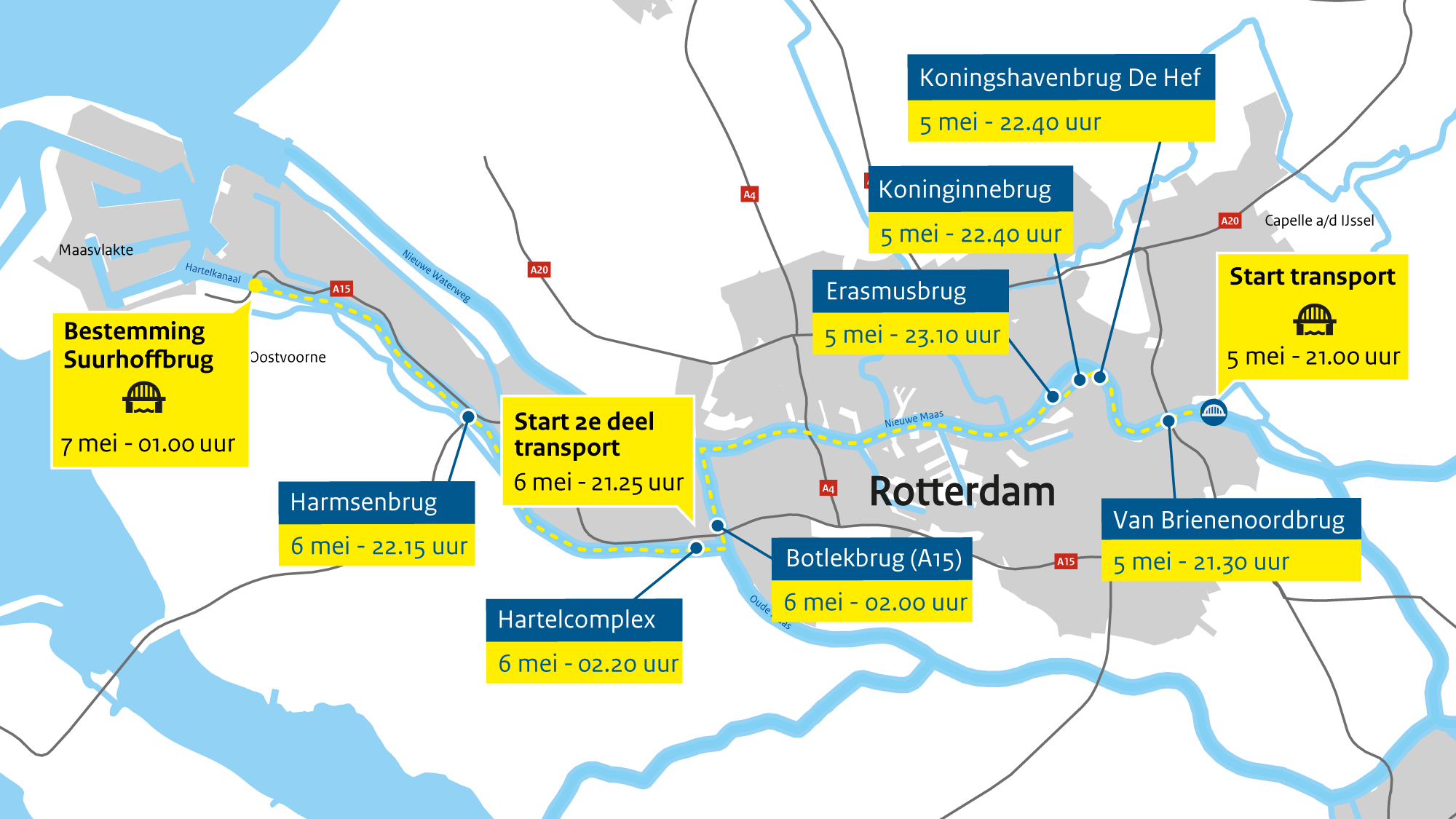
Once ready for transport, the bridge would be placed on two pontoons and moved through Rotterdam with two tugs (one pulling and one pushing). Along the way, there would be several iconic and thrilling bridge passages, such as the Koningshaven Bridge "De Hef", the "Koninginnebrug", and the Erasmus Bridge. On the second day of transport, the Harmsen Bridge would be passed, with only a few centimeters of clearance on either side.

On the final day, the bridge would be placed in position, a complex dance involving winches and hydraulic jacks to position the bridge with millimeter precision on the abutments.
The Livestream Plan
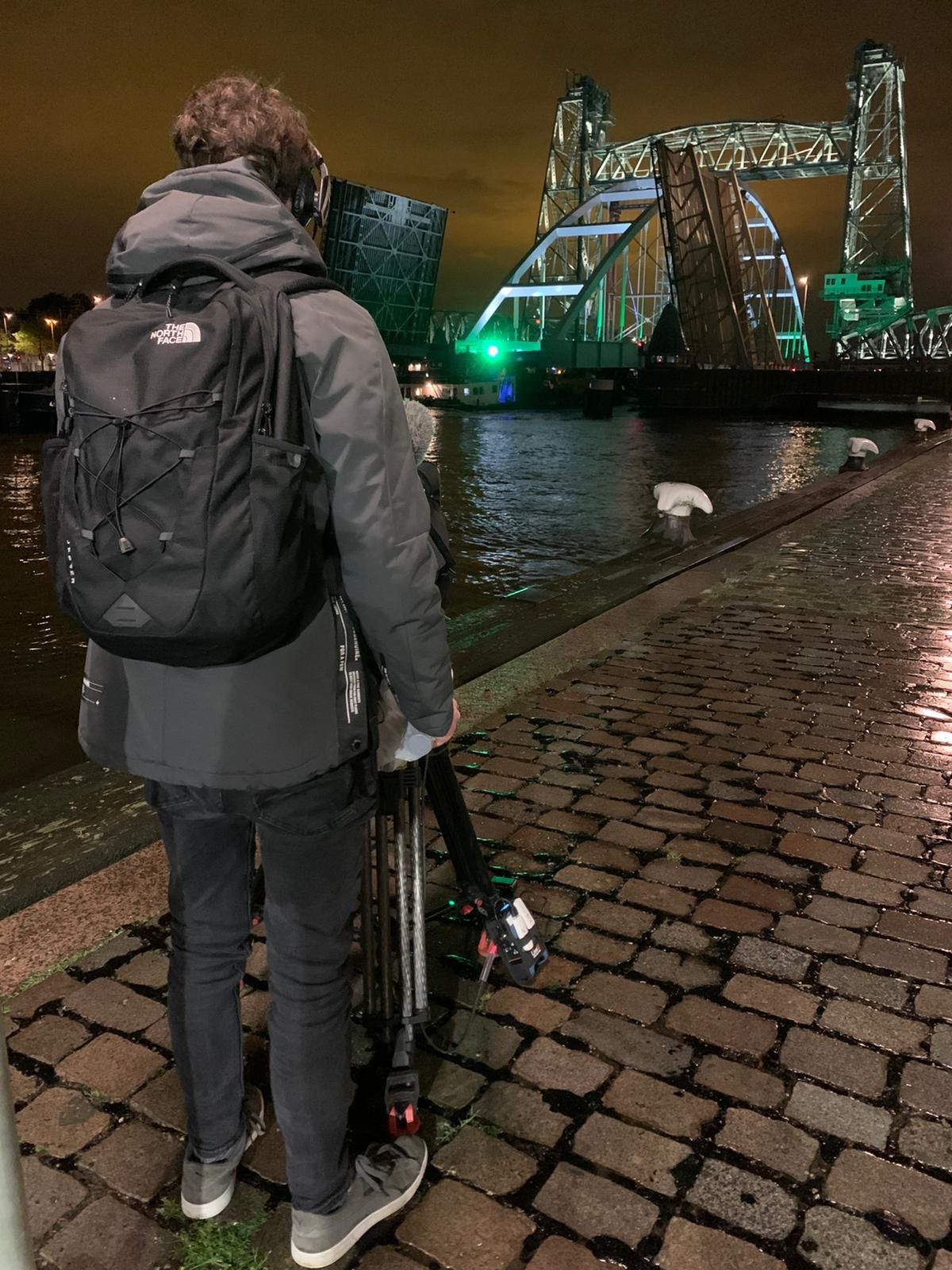
Technological capabilities, production frameworks, and budget were considered together. From this, we and Tappan distilled a plan to cover not only the Suurhoff Bridge but also all the unique aspects of this logistical mega-operation with 5 teams.
The first three teams would work from the quay, with 1 drone team and 2 camera teams taking turns at predetermined locations, balancing travel time through Rotterdam with the best perspectives.

The remaining two teams would work from the water, one on a free-moving camera boat and the other on the pushing tug.
To keep up with the transport by road, no time could be wasted finding a good spot, parking, etc. We knew in advance that all bridges on the route would be open, so crossing the Maas was not an option. The entire route for the mobile teams was scouted in advance and meticulously documented in a route book, which each team received on paper. All navigation points were pre-programmed with a QR code that the driver could scan to get their next destination.

One of the teams would travel with a presentation team to report live from the quay on the transport.
Remote Production
A headquarters for the entire production was set up in an office in Delft, to minimize driving distance to most of the route.
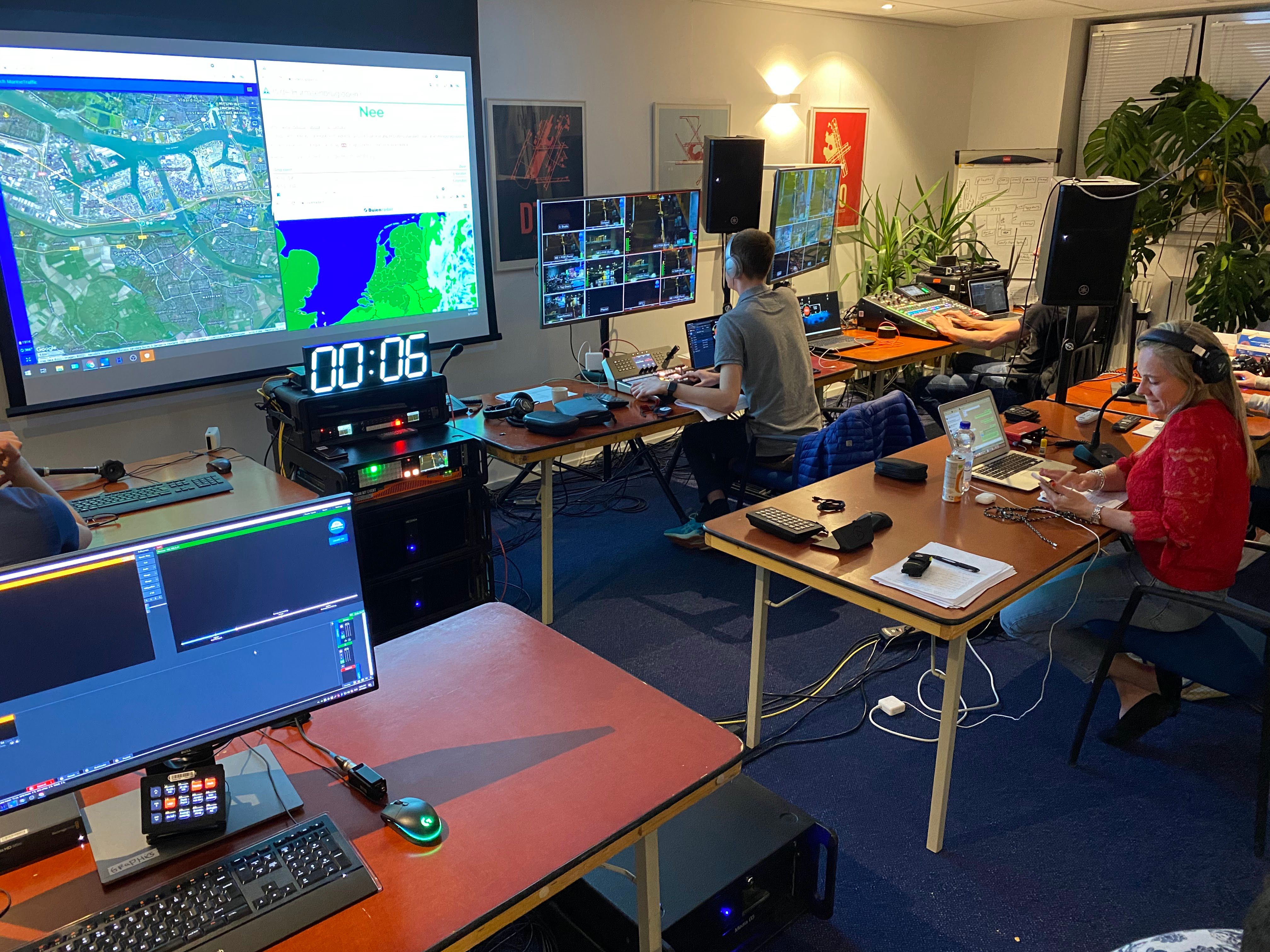
With the route and mobility of the teams, a wired connection was out of the question. Satellite was also not an option for the ships. A 4G-based connection technique was quickly chosen, using LiveU transmitters that can bundle multiple SIM cards into one connection. This way, it was possible to receive all cameras in the control room with just a 1-second delay.
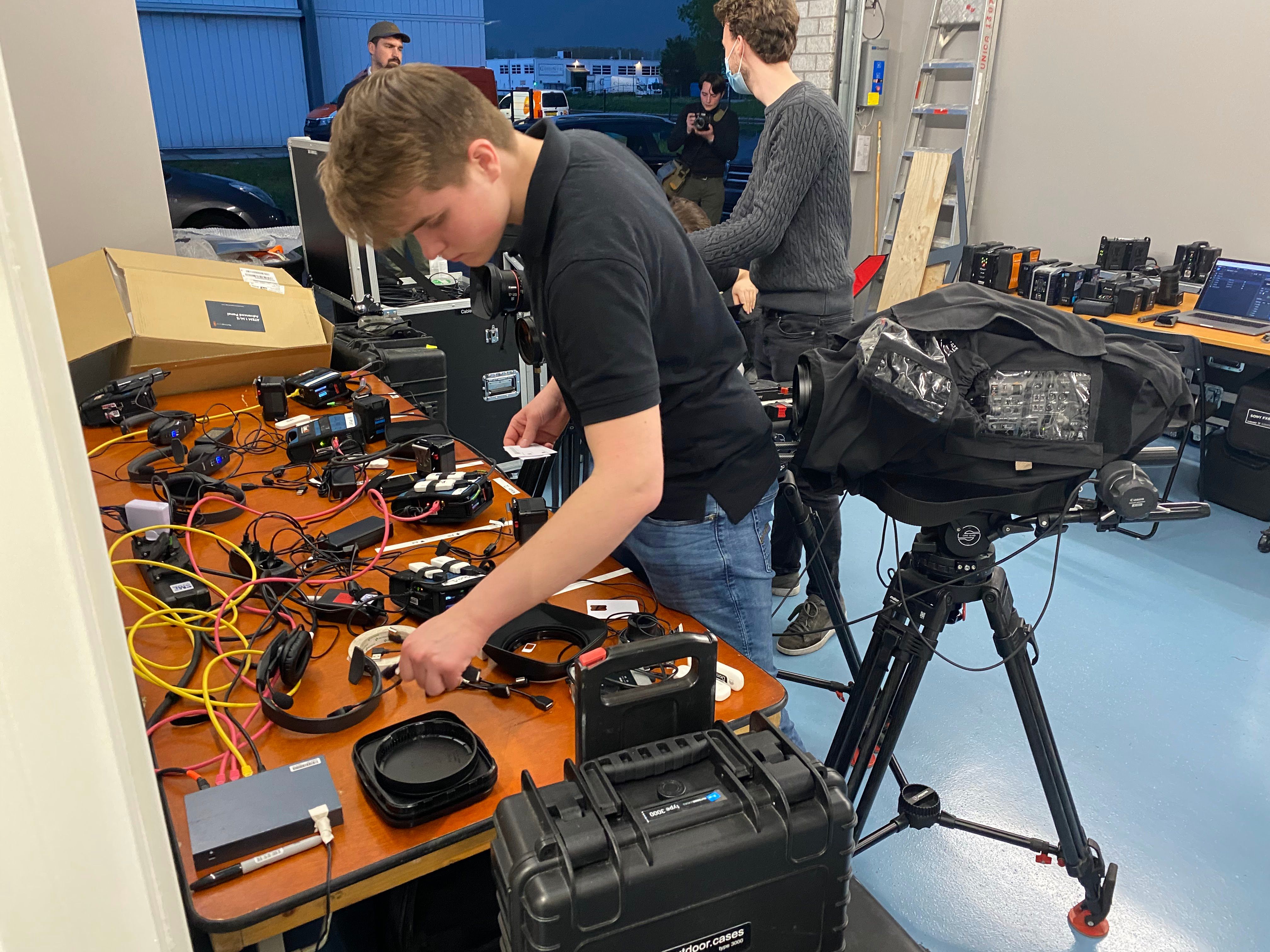
To keep so many SIM cards organized, a custom SIM card setup was chosen in collaboration with Water Telecom. This allowed all SIM cards to be configured remotely, and it was also possible to switch between providers on the fly to achieve higher speeds.
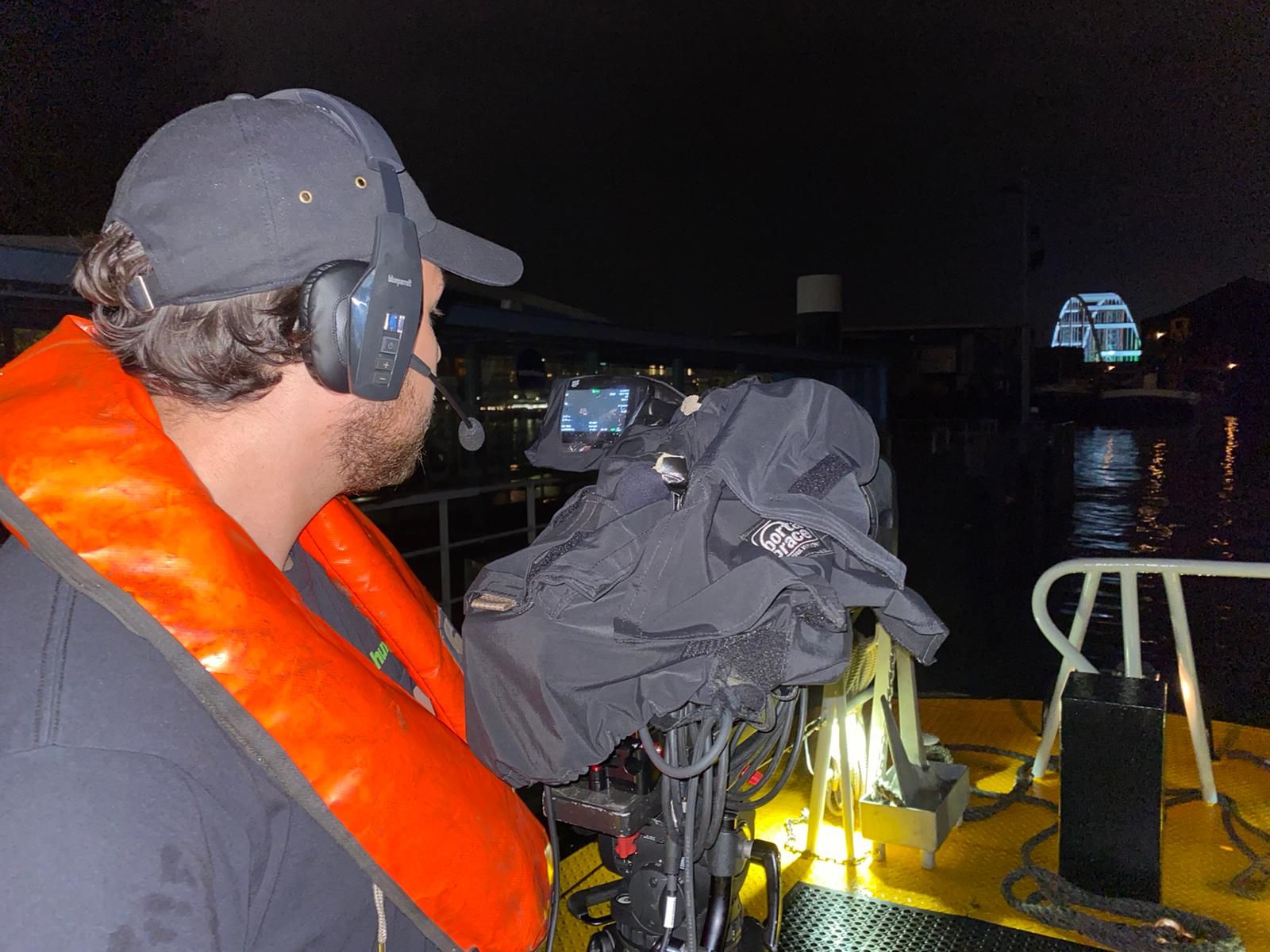
Unity intercom was used for communication, allowing contact with all mobile teams via 4G. All teams shared their location and were tracked by a producer, who could also calculate if they would arrive on time at their next destination to capture the Suurhoff Bridge.
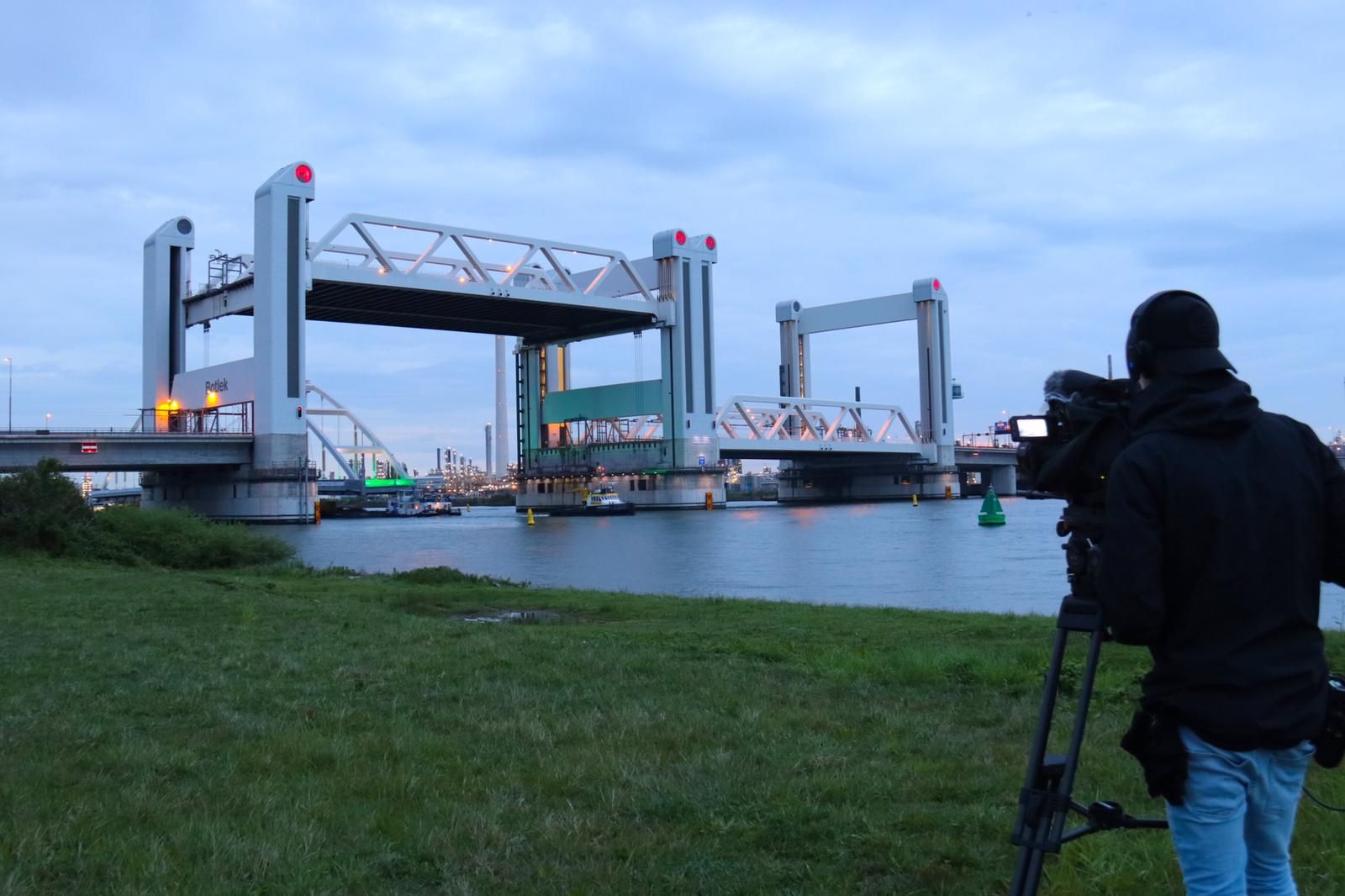
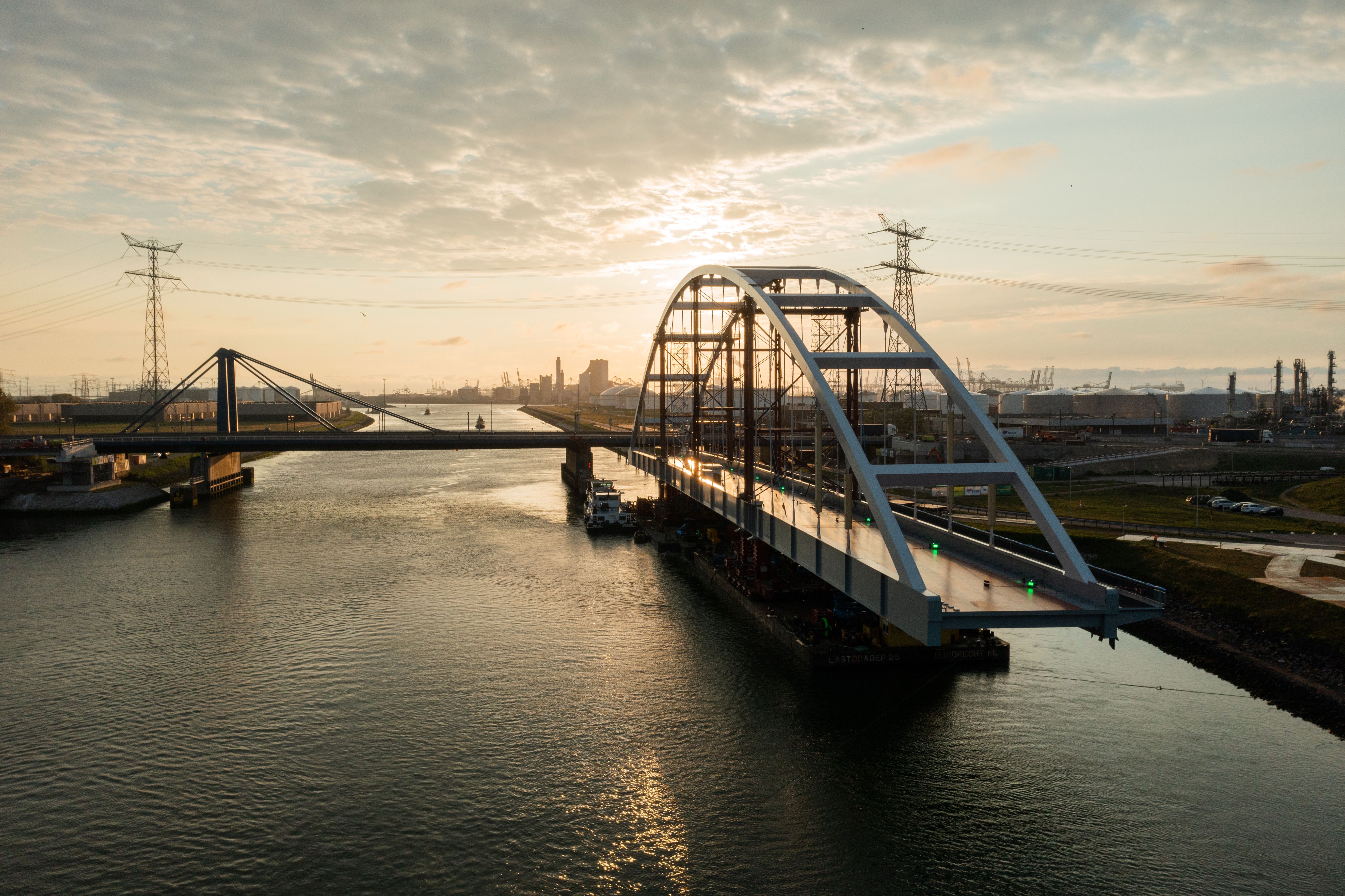
Light Sensitivity
It soon became clear that the transport would take place at night. What wasn't clear was whether it would be possible to illuminate the bridge during transport. In any case, it would be a particularly challenging lighting situation, especially for the quay teams, who faced the difficult combination of long distance and low light.
The best cameras and the best lenses were required. The camera choice fell on the Sony FX-9 range due to its full-frame sensor with extreme light sensitivity. This was combined with the Canon Cine Servo 25-250mm T2.95, of which 4 were gathered with some effort in Amsterdam.
Aerial Shots
A particularly complex part of the operation was providing the drone shots. Flying a drone at night is already very difficult in the Netherlands, and flying at night in the center of Rotterdam under the authority of Rotterdam Airport's tower would require specific government permission, which is rarely granted. However, the unique nature of the transport and the significant public interest worked in our favor, and permission was granted.
Live Editing for News Footage
During the operation, an editor provided footage to Rijkswaterstaat for publication in the morning news. A compilation video of each operation (transport through Rotterdam, passage of the Harmsen Bridge, and placement of the bridge) was also made immediately to conclude the broadcast and publish on YouTube.
All aftermovies and livestreams can be found in this playlist.
Changing Plans
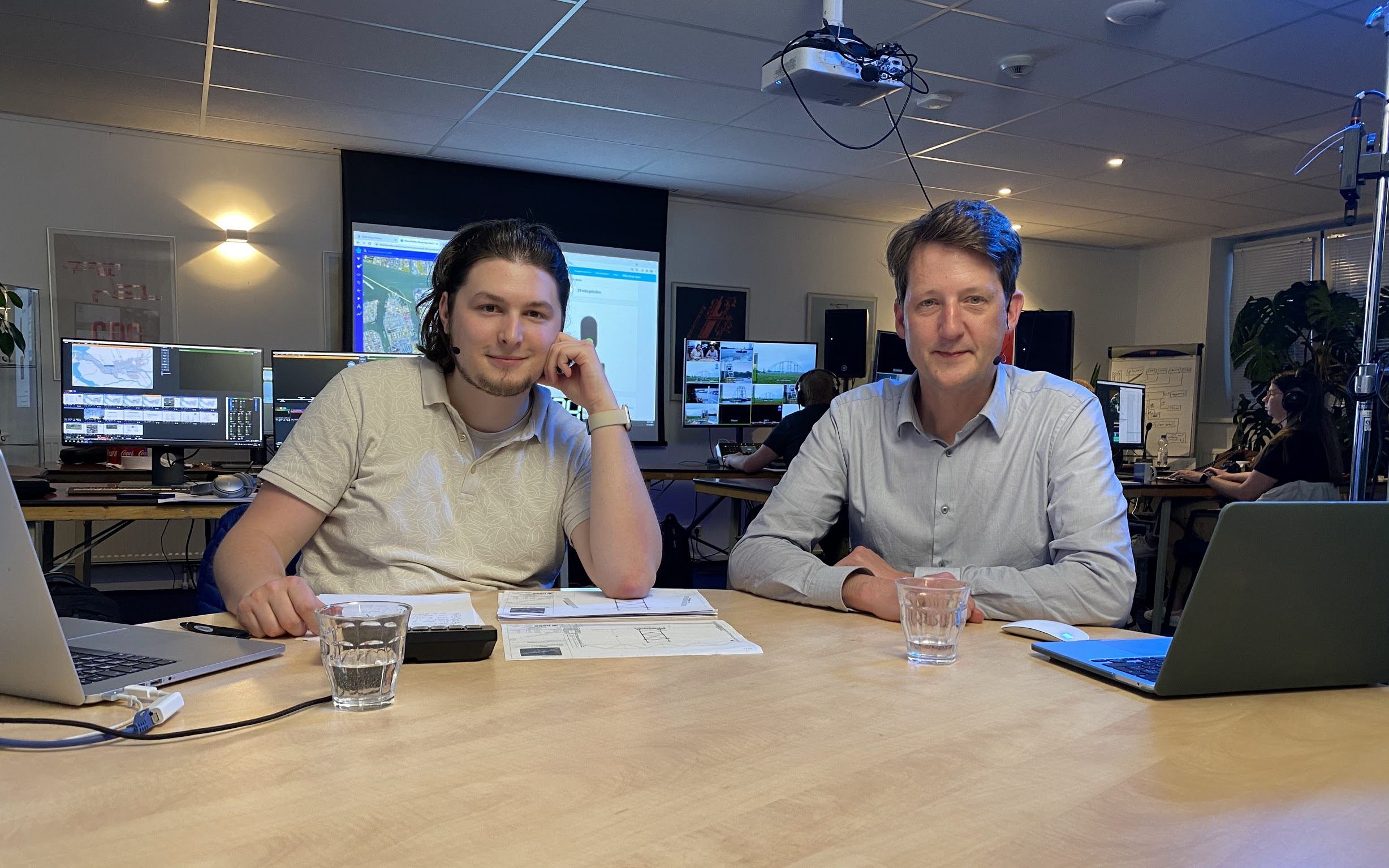
The entire operation was postponed twice due to weather conditions. The puzzle of the livestream production had to adapt dynamically. On the final transport night, the presentation team was no longer available, and an alternative way to structure the broadcast had to be found. An emergency meeting was called, with the question: how do we now find a presentation team with in-depth knowledge of the operation? The operational team managing the bridge transport couldn't spare anyone. The conclusion was that the producers in the livestream team, Jeroen from Tappan and Floris from Stream My Event, would have to take up the mantle. But both were also needed in the control room for the livestream, so a mini studio was set up there. Jeroen and Floris were provided with all the facts, construction drawings, animations, previously recorded videos, and Rijkswaterstaat's guidelines, and they gave periodic updates on the bridge's progress through Rotterdam.
Slow TV & Live Graphics
A floating bridge on pontoons is many things, but it is not fast. It was certain that this would be a slow TV broadcast with many unknown factors and delays. To keep the audience informed of the rapidly changing schedule, a dynamic timeline was placed at the bottom of the screen, showing expected arrival times. The operational team regularly provided updates that were incorporated into the graphics.

Reception
The fun part of the slow live TV format was the interactive engagement with audience questions. The director read the comments on the livestream and tried to respond with images and camera direction, for example, by capturing things viewers were curious about. The drone pilot also followed along on YouTube and managed to get the drone into the tightest spots to offer viewers a unique perspective.
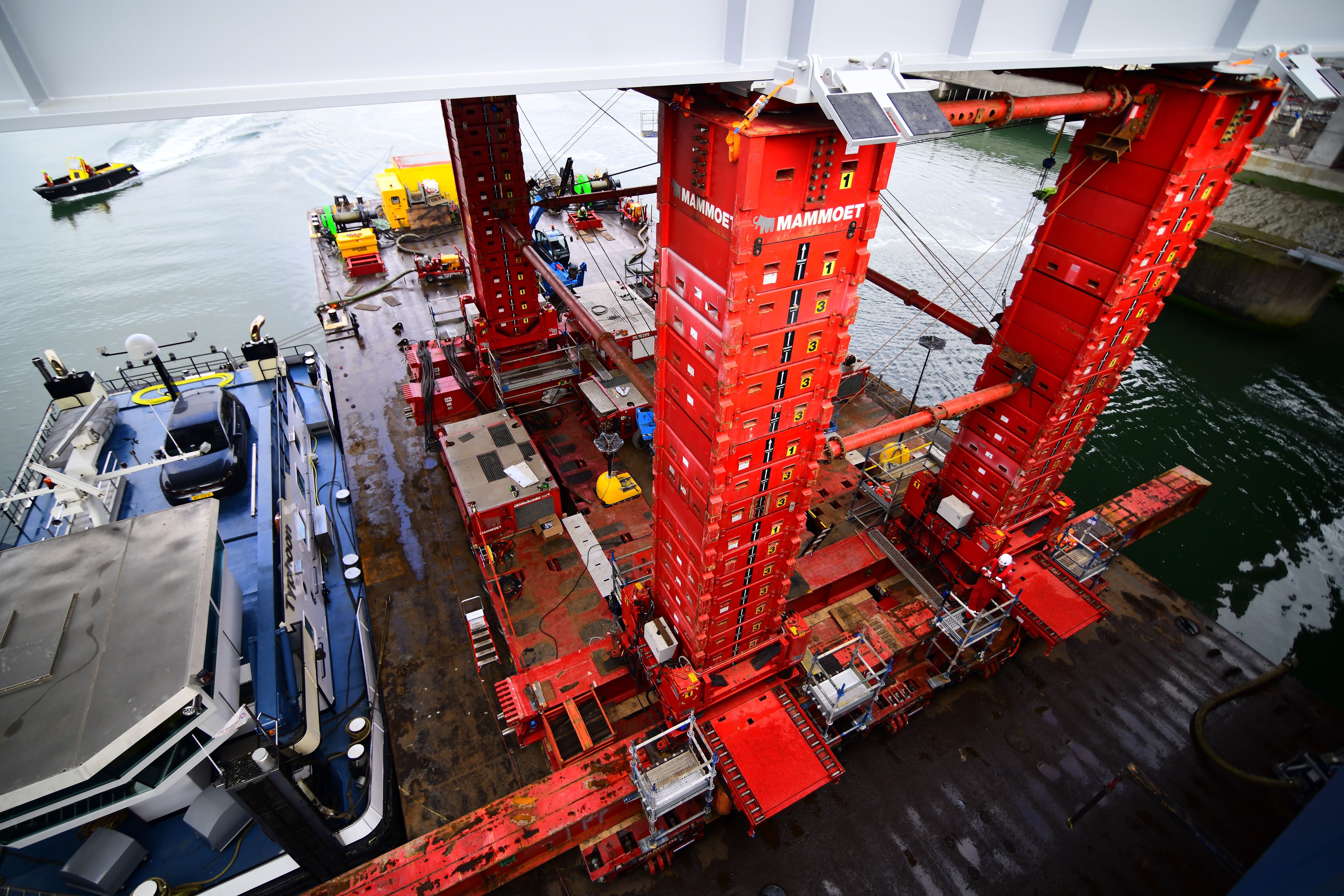
The response to the livestreams was almost universally positive, with the overall sentiment being that the Netherlands had once again put itself on the international map with its craftsmanship on the water. Something we wholeheartedly agree with.
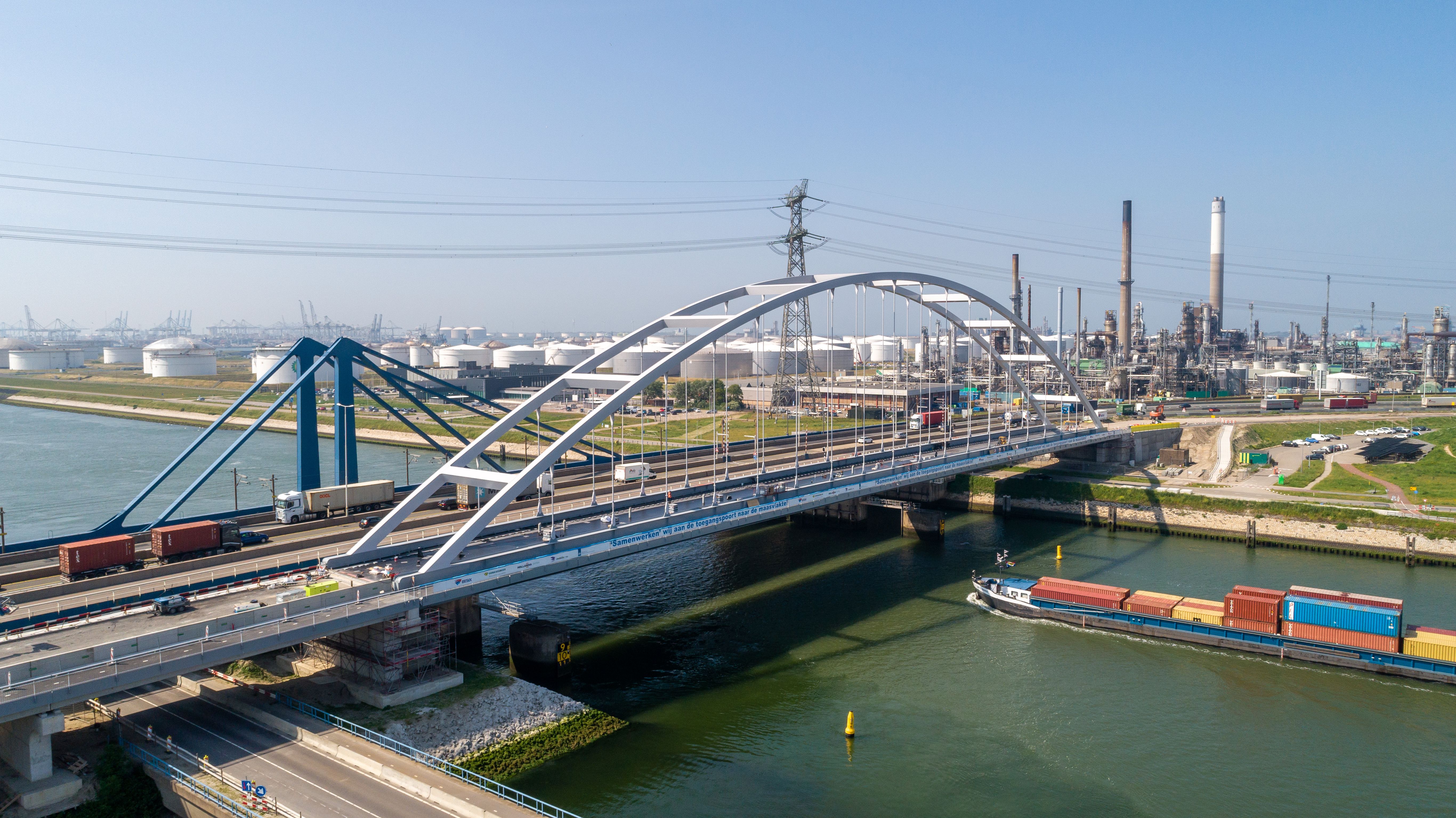
Credits
The photos in this case study, where not from the crew, were taken by the drone team of Eyecatcher Films. The cameras were provided by Maloney. Thanks to the many crew members for your craftsmanship, patience, and flexibility during this project!
